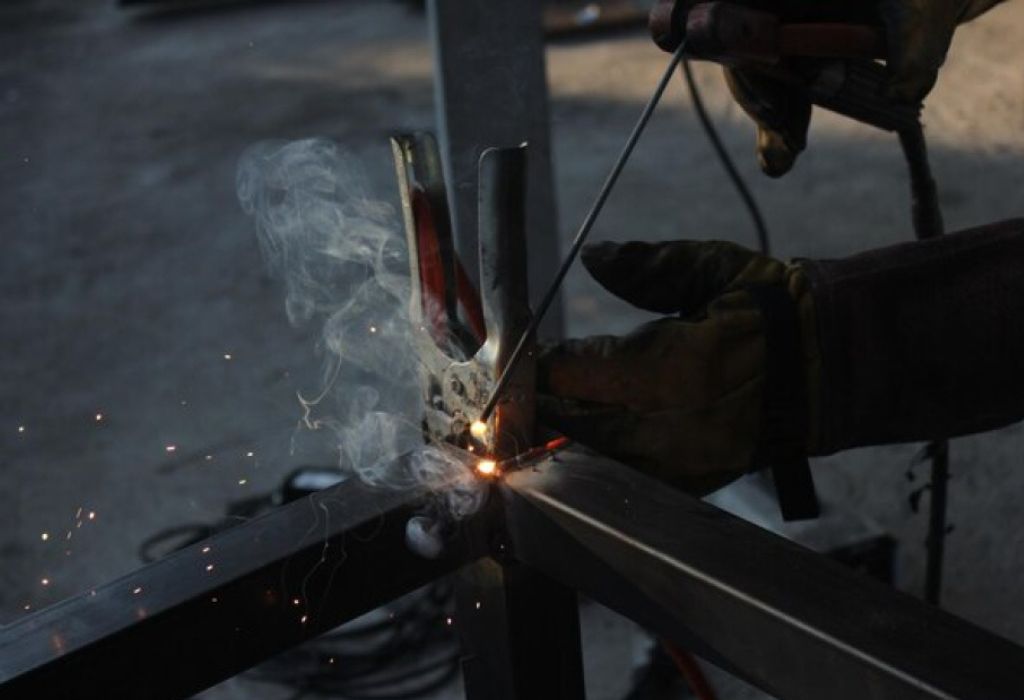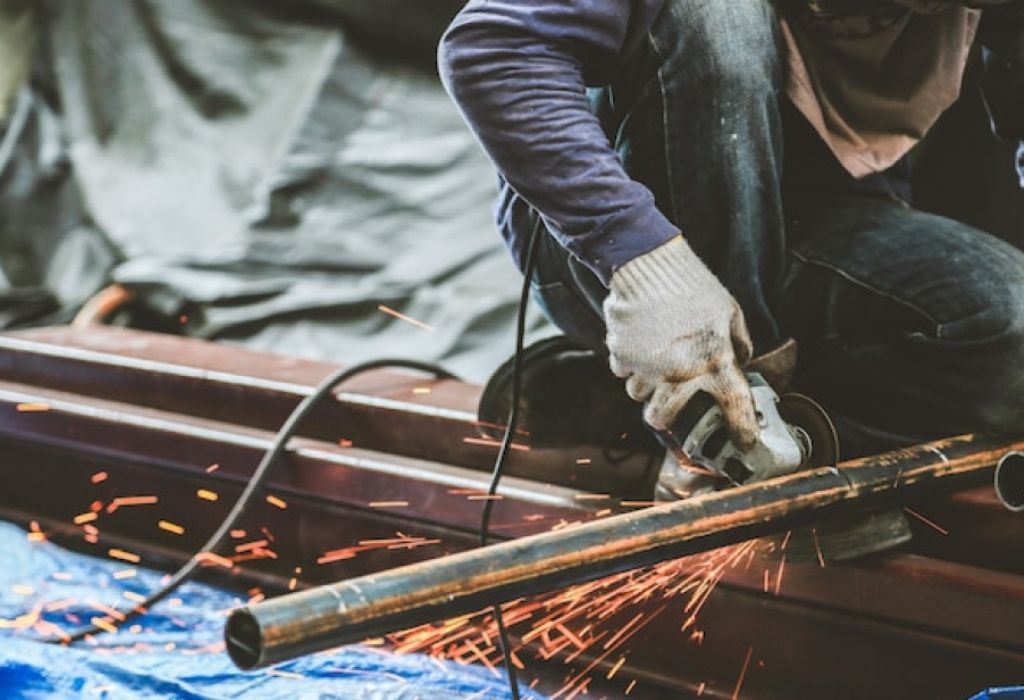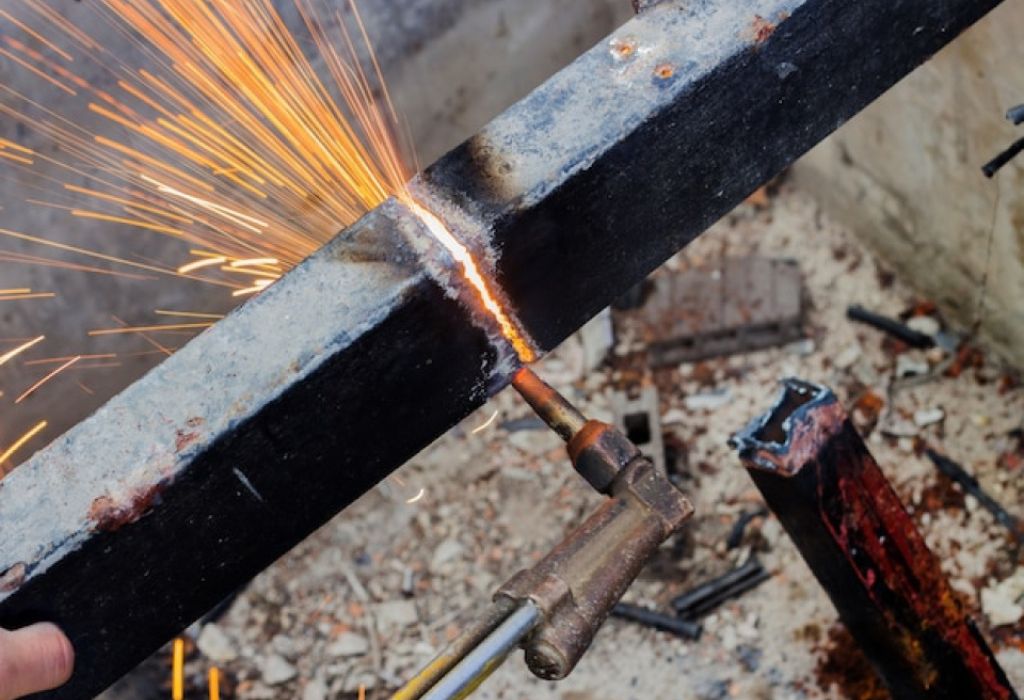When a cast iron part breaks and needs to be joined to steel, most welders hesitate. Cast iron is brittle, carbon-rich, and prone to cracking, while steel expands and contracts differently under heat.
Yet in industrial repair and fabrication, situations often demand joining these two metals — from engine blocks and machine frames to heavy-duty brackets. The question becomes: can you weld cast iron to steel and make it last?
According to the American Welding Society (AWS), dissimilar metal welding between cast iron and steel is possible but requires special filler metals, temperature control, and post-weld procedures source. Studies show that over 60% of failed cast iron repairs result from poor preheating or rapid cooling.
This guide explains how to weld cast iron to steel safely, what filler metals to use, and how to control cracking with proper heat management. Let’s explore the science and step-by-step process behind a strong, stable joint.
The Basics — Can You Weld Cast Iron to Steel?

Welding cast iron to steel is possible, but it requires an understanding of metallurgy, temperature balance, and filler selection. Cast iron contains 2–4% carbon, while mild steel typically has less than 0.3%. This difference makes cast iron hard and brittle when overheated.
Is welding cast iron to steel possible?
Yes, you can weld cast iron to steel if you use the correct technique and filler metal designed for dissimilar joints.
Why is it more difficult than steel-to-steel welding?
Because cast iron’s high carbon content forms brittle carbides when heated too fast or cooled too quickly.
Which types of cast iron can be welded?
Grey and ductile (nodular) cast irons are weldable, while white cast iron is usually unweldable due to its hard, brittle microstructure.
Does the weld strength match steel?
Not fully — the joint is often 60–80% as strong as a steel-to-steel weld.
Why is controlling heat important?
Heat causes expansion differences that lead to cracking, so temperature must be carefully managed throughout.
Challenges and Common Failures
Most failures occur because of uneven heating or incorrect filler selection. The interface between cast iron and steel can experience high stress, leading to cracks and distortion.
What causes cracks during or after welding?
Rapid cooling, carbon migration, and high residual stress in the heat-affected zone cause cracks to form.
Why does carbon migration matter?
Carbon moves from cast iron into steel, forming brittle martensite and weakening the weld.
Can porosity occur in the weld?
Yes, trapped gases, contamination, or improper shielding can create porous weld beads.
Does differential expansion cause issues?
Yes, steel expands more under heat, pulling the rigid cast iron apart as it cools.
Can embrittlement be prevented?
Yes, through low-heat input welding, nickel filler use, and gradual cooling to reduce internal stress.
Preparation Before Welding
Successful results begin with preparation. Clean surfaces, controlled preheating, and correct joint design reduce internal stress and improve fusion quality.
Why is cleaning important?
Oil, rust, and carbon buildup can cause slag inclusions or porosity.
How much preheat is needed?
Cast iron should be preheated between 150–600°F (65–315°C), depending on part size and thickness source.
Should the joint be beveled?
Yes, a V-groove or U-groove helps distribute heat evenly and ensures full penetration.
Why use a buffer layer?
Applying a nickel buttering pass on cast iron creates a transitional layer that absorbs stress.
Can stress be reduced before welding?
Yes, warming the entire part evenly lowers temperature gradients that lead to cracking.
Choosing the Right Filler Metal
The filler metal determines weld compatibility, flexibility, and crack resistance. Nickel-based electrodes or Ni-Fe alloys are ideal for joining cast iron to steel.
Which electrode is best?
Pure nickel electrodes (ENi-CI) are preferred for high ductility and crack resistance.
What about Ni-Fe alloys?
Nickel-iron fillers (ENiFe-CI) offer a balance between strength and flexibility at lower cost.
Can stainless steel rods be used?
They can work for non-critical repairs but often create hard, brittle zones due to carbon absorption.
Is MIG or flux-cored filler available?
Yes, NiFe-based MIG wires like DO23 and Supercast provide consistent deposition rates.
Why does filler metal cost more?
Nickel-based alloys are expensive but crucial for long-term weld integrity and machinability.
Welding Techniques and Procedures

Each welding process has its strengths. Stick welding is most common, though MIG and TIG are options with the correct filler and settings.
Which method is most reliable?
Stick (SMAW) welding with nickel electrodes remains the most widely used and proven process.
Can you MIG weld cast iron to steel?
Yes, using nickel-based wire and low voltage to limit heat input, but precision is essential.
What is the stitch-welding method?
Short intermittent welds (1–2 inches) that allow gradual cooling between passes.
Should peening be done after each bead?
Yes, light tapping relieves shrinkage stress and reduces crack formation.
How to control interpass temperature?
Keep interpass temperatures below 600°F (315°C) to avoid overheating and maintain ductility.
Post-Weld Cooling and Stress Relief
Controlled cooling is as important as preheating. Rapid temperature drops can fracture the joint even after a perfect weld.
How should you cool welded parts?
Wrap the assembly in a thermal blanket or bury it in dry sand or lime for gradual cooling.
Is post-weld heat treatment required?
Yes, a slow cooldown or annealing at 400–600°F helps relieve internal stress.
Can quenching cause cracks?
Yes, never quench cast iron — it cools unevenly and induces microcracks instantly.
How to detect hidden cracks?
Use dye penetrant or ultrasonic inspection to check weld zones.
Is mechanical grinding helpful after cooling?
Yes, it smooths stress points and reduces notch sensitivity around the bead.
Alternatives When Welding Isn’t Suitable
In some cases, welding cast iron to steel may not be the best option. Alternatives like brazing or metal stitching provide safer, lower-heat solutions.
What is brazing?
A process that joins metals using a filler that melts below 450°C, avoiding base metal fusion.
Can brazing join cast iron to steel effectively?
Yes, it’s ideal for low-stress joints or decorative parts.
What is metal stitching?
A cold mechanical repair technique using metal pins and locks to restore cracked castings.
When should stitching be chosen?
When the part cannot withstand heat, such as engine blocks or vintage machinery.
Are adhesives viable?
High-temperature epoxy or metal-filled resins can work for non-structural bonding.
Step-by-Step Welding Example
Follow this structured procedure to weld cast iron to steel effectively.
Step 1: Preparation and Cleaning
Clean the metal surfaces with a wire brush and solvent to remove oil and oxidation.
Why is surface preparation critical?
Contaminants cause porosity and poor fusion in the weld.
Step 2: Preheat and Fixture Setup
Preheat both metals evenly using a torch or oven.
What temperature should you target?
Aim for 400–500°F (200–260°C) to reduce thermal shock.
Step 3: Apply Buffer Layer
Deposit a thin nickel layer on the cast iron before the main weld.
Why add this layer?
It provides flexibility and minimizes carbon migration.
Step 4: Perform Stitch Welding
Use short weld runs of 1–2 inches, allowing cooling pauses between each.
How long should cooling take?
Wait 30–60 seconds between stitches to stabilize temperature.
Step 5: Peen and Re-weld
Lightly hammer each bead before the next pass.
Does peening always help?
Yes, it releases stress and prevents microcrack buildup.
Step 6: Post-Weld Cooling
Allow the workpiece to cool gradually under insulation.
How long should cooling take?
Depending on thickness, slow cooling can take several hours.
Expected Results and Limitations

Even perfect technique can’t change the metallurgical differences between cast iron and steel. Understanding limits ensures safety and durability.
How strong will the weld be?
Typically, 60–80% of the strength of a comparable steel weld.
Will the joint remain crack-free forever?
Not always — thermal cycling and vibration can eventually cause microcracks.
How does fatigue resistance compare?
It’s lower near the fusion line due to hardness gradients.
Can machining be done afterward?
Yes, nickel-based welds are easily machinable after cooling.
When is replacement a better choice?
If the component bears high cyclic loads or is safety-critical, replacement is safer than repair.
Future Welding Trends and Advanced Methods
Innovation in dissimilar metal joining is making welding cast iron to steel more predictable and precise.
Can friction welding join cast iron and steel?
Yes, solid-state methods reduce cracking but require advanced equipment.
Is laser welding effective?
Laser beams provide low heat input, minimizing distortion, though equipment cost is high.
What about additive manufacturing?
Hybrid metal 3D printing can deposit nickel-steel transition layers for precise joints.
Will new alloys improve results?
Yes, research into Ni-Co-Fe blends promises better metallurgical compatibility.
Can smart sensors help welders?
Real-time thermal feedback systems are emerging to optimize preheat and cooling cycles automatically.
Conclusion
Welding cast iron to steel is challenging but achievable with discipline, patience, and the right materials. The process demands precise preheating, careful filler selection, low heat input, and slow cooling to prevent cracking.
Nickel rods, stitch welding, and post-weld stress relief make the difference between success and failure. In less demanding cases, brazing or metal stitching can be safer alternatives.
The bottom line — you can weld cast iron to steel, but the key lies in controlling heat and respecting the unique behavior of both metals. With correct technique, your dissimilar joint can last for years in service.

I’m Darrell Julian, the founder, lead writer, and hands-on welding enthusiast behind ArcWeldingPro.com. With more than 15 years of real-world welding experience, I created this platform to share what I’ve learned in the field, in the shop, and in the heat of the arc.


